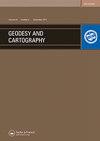西澳大利亚围场内土壤性质空间变异性的逆距离加权与普通克里格法比较
IF 2.1
Q3 REMOTE SENSING
引用次数: 10
摘要
因地制宜的作物管理需要将资源应用和农艺实践与土壤和作物需求相匹配,因为它们在田地内因空间和时间而异。因此,关于农场或围场规模的土壤成分的信息是必不可少的。整个围场的土壤成分可能不均匀。例如,如果只有东北角出现缺陷,那么对整个围场进行施肥可能效率不高。此外,不可能对围场的每一厘米都进行采样,因为这将是一个非常耗时和昂贵的过程。理想情况下,我们应该能够收集足够的样本点,以便使用空间插值技术准确地生成土壤属性的连续图,并且可以对整个围场的土壤成分做出良好的判断。本文比较了两种空间插值方法——克里格法和逆距离加权法(IDW),评价了它们在围场水平季节性稳定土壤性质预测中的准确性。由于Yule等人(1996)和Brady和Weil(1999)之前的研究发现,有机质含量和土壤反应(pH)是本次调查选择的土壤特性,这些特性与种植潜力相关。选择的空间插值器在现有数据集(例如100个土壤样本)上进行测试,这些数据集是在西澳大利亚西南部一个60公顷围场上使用分层随机方法收集的。研究方法包括三个主要步骤。首先,应用基本的描述性统计技术来识别异常值的存在。其次,利用所选插值器生成土壤属性的连续图,最后以均方根误差(RMSE)作为验证指标,对所选土壤属性选择最佳空间插值器。因此,对于每一种土壤性质,从主数据集中抽取每四分之一的样本,并将其搁置,以验证插值方法的结果。同样,使用克里格插值方法生成的不确定性图被用作评估预测图质量的附加来源。RMSE结果表明,IDW对pH(例如0.38 vs 0.39)和有机质(1.25 vs 1.34)的表现略好于克里格法。本文章由计算机程序翻译,如有差异,请以英文原文为准。
A Comparison of Inverse Distance Weighting and Ordinary Kriging for Characterising within-paddock Spatial Variability of Soil Properties in Western Australia
Site-specific crop management requires matching resource application and agronomic practices with soil and crop requirements, as they vary in space and time within a field. As such, information on the composition of soils at either farm or paddock scale is essential. Soil composition over an entire paddock might not be uniform. For instance, it may not be efficient to fertilise an entire paddock if only the northeast corner show deficiencies. Furthermore, it is not possible to sample every centimetre of the paddock, as this would be a very time consuming and costly procedure. Ideally, we should be able to collect enough sample points so that continuos maps of soil properties can be accurately produced using spatial interpolation techniques, and good judgements can be made about the soil composition of an entire paddock. Two spatial interpolators, namely kriging and inverse distance weighting (IDW) are compared in this paper, evaluating their accuracy in the prediction of seasonally stable soil properties at paddock level. Organic matter content and soil reaction (pH) are the soil properties selected for this investigation, as previous research by Yule et al. (1996) and Brady and Weil (1999) has found these properties to be correlated to cropping potential. The selected spatial interpolators are tested on an existing data set (e.g. 100 soil samples) collected using a stratified random approach over a 60 ha paddock, located in the southwest of Western Australia. The research approach consists of three main steps. Firstly, basic descriptive statistical techniques are applied to identify the presence of outliers. Secondly, selected interpolators are applied to generate continuous maps of the soil properties, and finally the mean root mean square error (RMSE) is used as the validation index, and to select the best spatial interpolator for the soil properties selected. Therefore, for each soil property, every fourth sample is removed from the main data set and put aside to validate the result of the interpolation method. Likewise, the map of uncertainty generated by using the kriging interpolation method is used as an additional source for evaluating the quality of the prediction maps. The RMSE results show IDW to perform slightly better than kriging for pH (e.g. 0.38 vs 0.39) and organic matter (1.25 vs 1.34)
求助全文
通过发布文献求助,成功后即可免费获取论文全文。
去求助
来源期刊

Geodesy and Cartography
REMOTE SENSING-
CiteScore
1.50
自引率
0.00%
发文量
0
审稿时长
15 weeks
期刊介绍:
THE JOURNAL IS DESIGNED FOR PUBLISHING PAPERS CONCERNING THE FOLLOWING FIELDS OF RESEARCH: •study, establishment and improvement of the geodesy and mapping technologies, •establishing and improving the geodetic networks, •theoretical and practical principles of developing standards for geodetic measurements, •mathematical treatment of the geodetic and photogrammetric measurements, •controlling and application of the permanent GPS stations, •study and measurements of Earth’s figure and parameters of the gravity field, •study and development the geoid models,
 求助内容:
求助内容: 应助结果提醒方式:
应助结果提醒方式:


